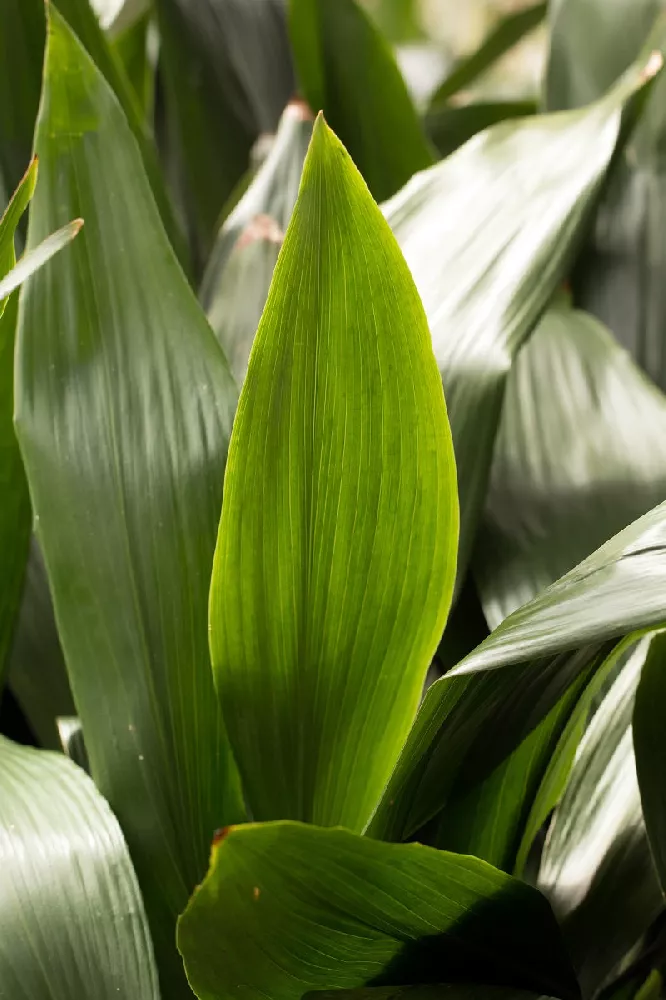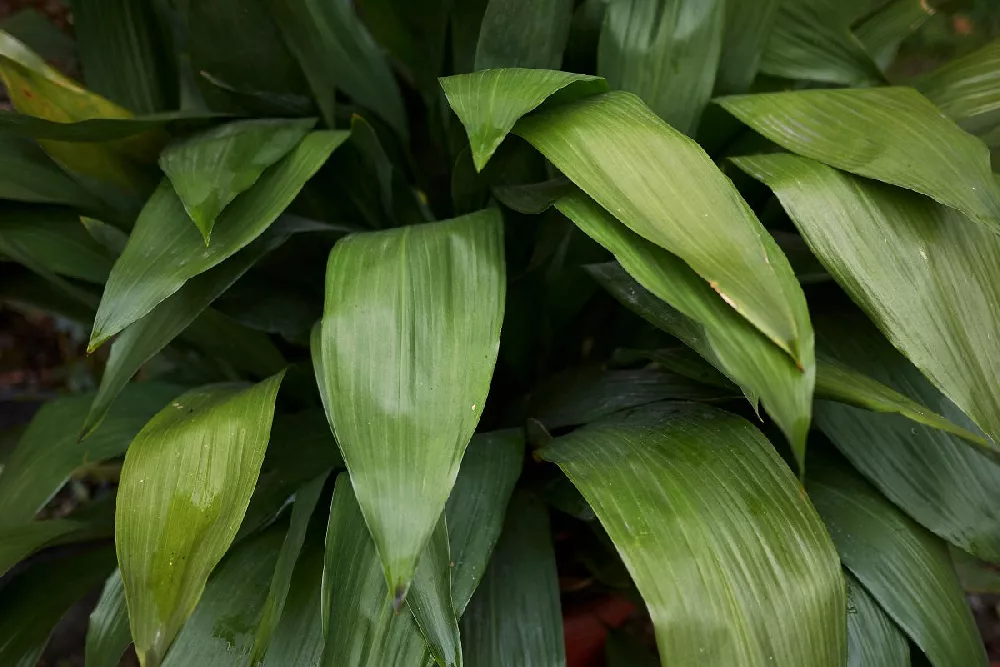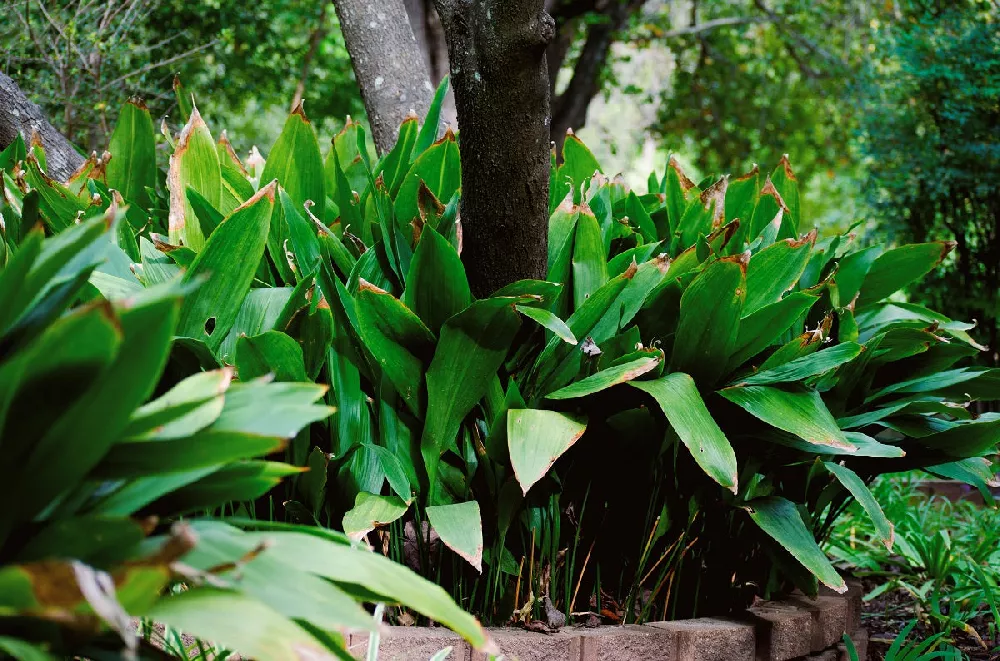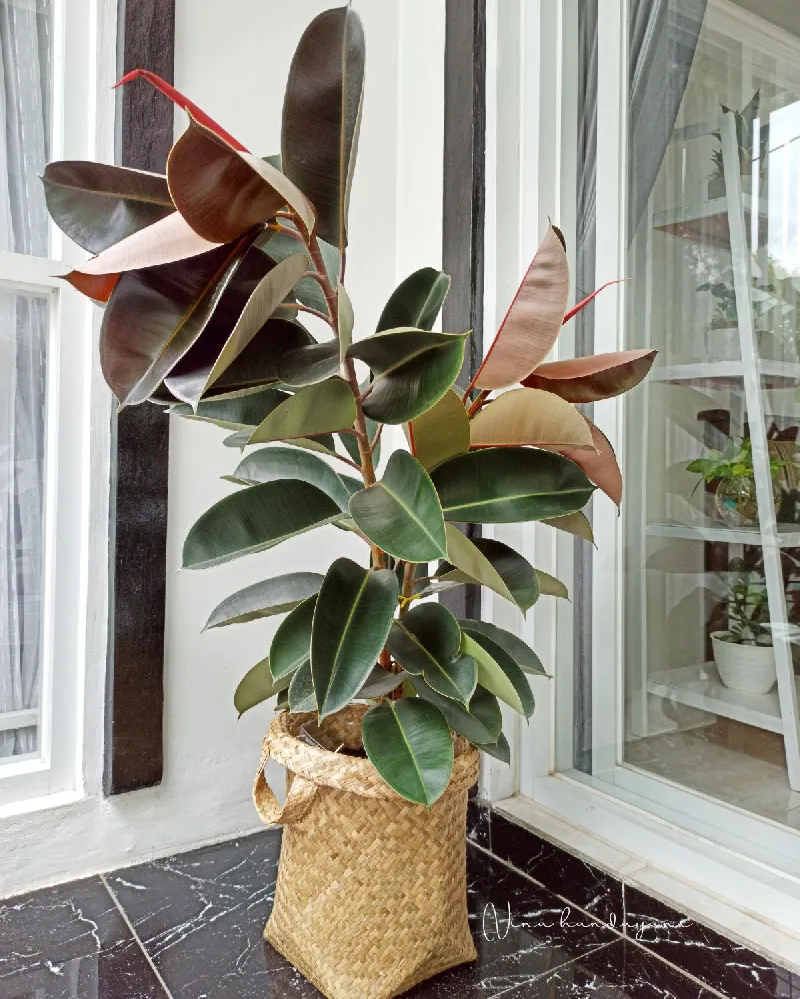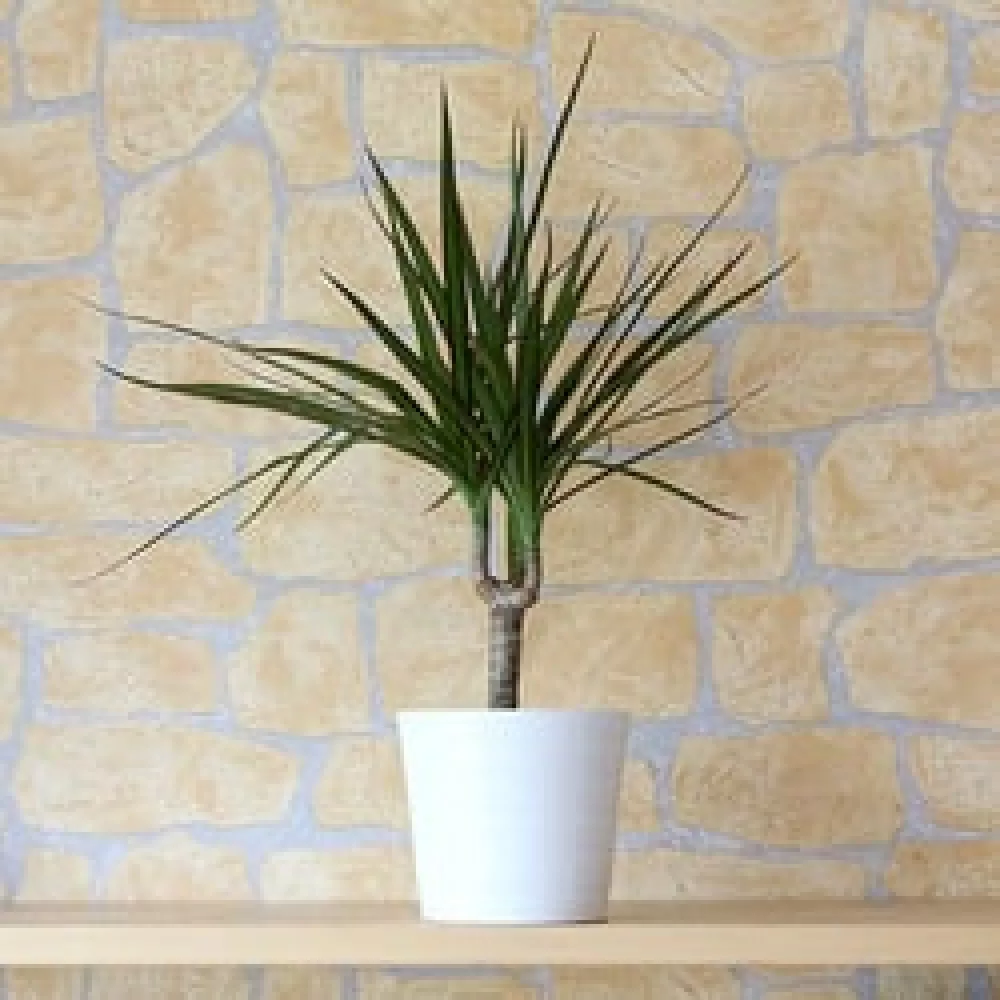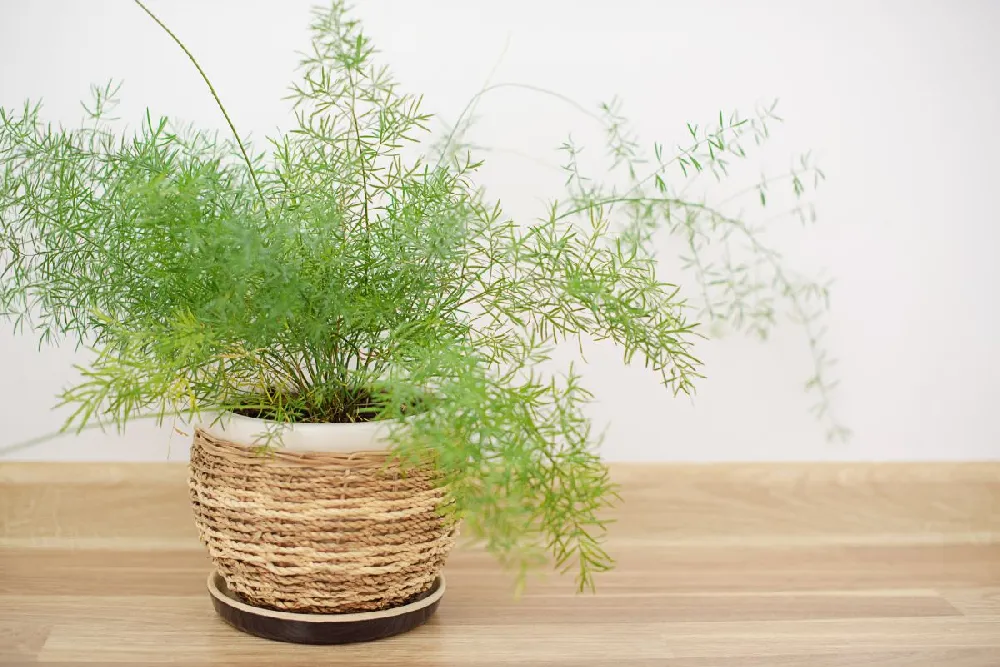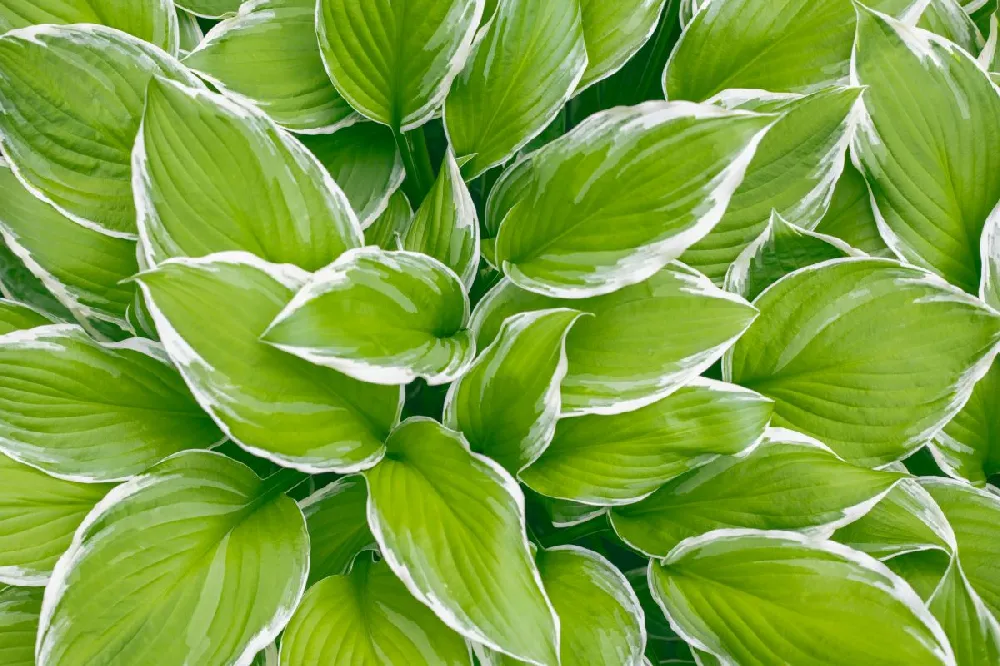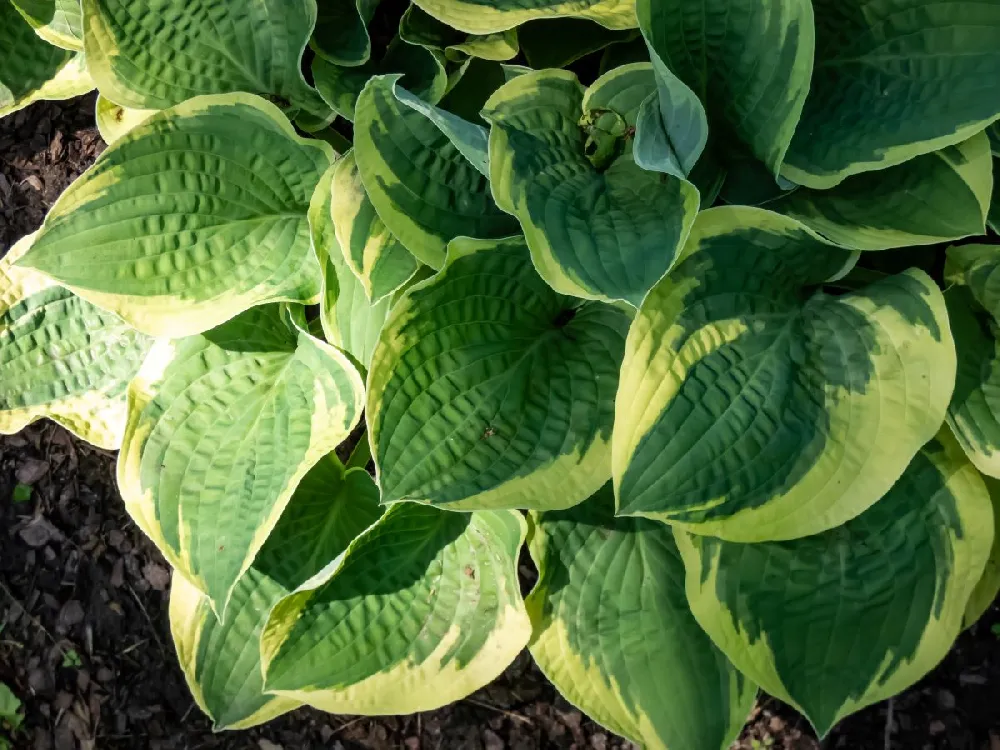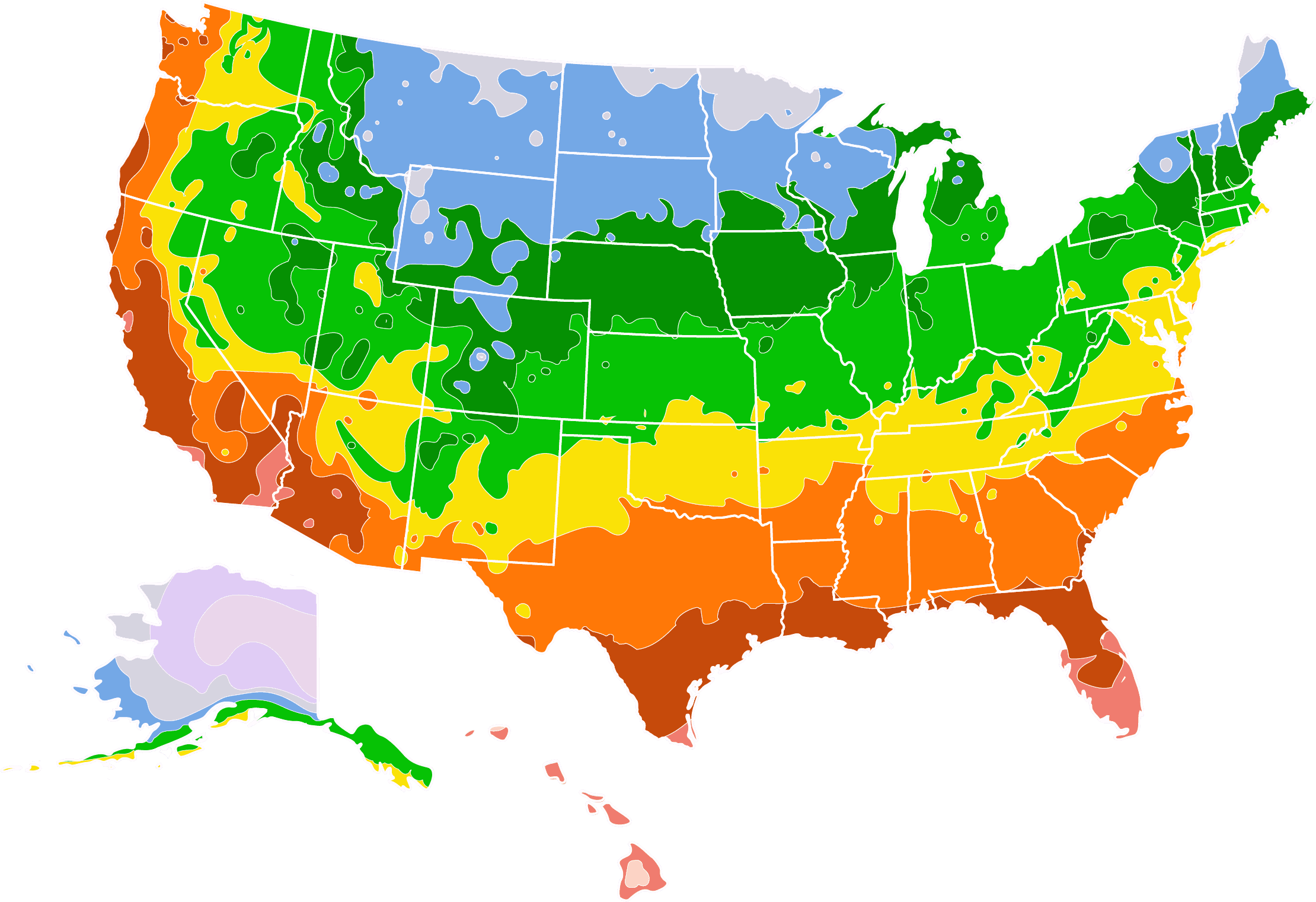- Home >
- Houseplants >
- Cast Iron Plants
Cast Iron Plants for Sale - Buying & Growing Guide
- Ships in 1-2 days
- 1-Year Warranty Eligible
- Pots or accessories are not included unless specified in the product options.
Shipping Details:
Once your order is shipped, you’ll receive an email with a tracking number and estimated delivery date. Most orders ship immediately, but some items are seasonal and may only ship in spring or fall. These products are noted on the website.
Much like the kitchen tool that gives it its name, the Aspidistra Elatior, or Cast Iron Plant, is fairly indestructible. A native to regions around Asia, this member of the lily family is known for its wide, flat, dark green leaves as well as its tolerance for irregular watering, temperature fluctuations, and limited sunlight. Other characteristics of Cast Iron Plants include:
- Recommended for growers who have limited natural light in their homes or may forget to water it
- Can be grown indoors or outdoors
- Ideal as ground cover under trees, where it will not receive much direct sunlight
Plant Care
Sunlight

Thrives in shade and indirect light. Avoid direct sunlight.
Watering
Keep soil moist in summer and cut back watering during winter. Tolerant of occasional drought.
Fertilizing

Fertilize during the growing season with a weak solution of a balanced, slow-release fertilizer.
Planting and Care
Planting instructions
You can plant your Cast Iron Plant indoors or outdoors. If you’re potting it as a houseplant, use a sturdy pot with drainage holes that has room for the roots to grow. Use a well-draining potting mixture (potting soil with a compost base works well.)
For outdoor growth, Cast Iron Plants do best in USDA plant hardiness zones 7-11. Set Cast Iron Plants in well-draining sandy or clay soil, in an area where they will receive lots of shade and little direct sunlight. If you’re planting multiple Cast Iron Plants, place about 12 to 18 inches apart.
Watering and nutrients
There is no regular watering schedule for Cast Iron Plants. Instead, water your plant when the top one inch of soil becomes dry (this typically happens every few weeks). If you forget, fear not. While the leaves may droop, they should perk back up after watering. Be careful not to overwater, as the roots are susceptible to rot if they’re sitting in soggy soil. Cast Iron Plants do not need to be fertilized often. Fertilizing them about once a month with an all-purpose liquid fertilizer in the spring and summer seasons will be sufficient.
Pollination
Cast Iron Plants produce small, purplish flowers resembling mushrooms, that grow near the soil surface. For over a century, it was believed that the Cast Iron Plants were pollinated by slugs. However, in 2018, further investigation by a team of Japanese scientists revealed that these flowers are actually pollinated by tiny fungus gnats, who are fooled by the flower’s mushroom-like appearance. Cast Iron Plants propagate by division. When dividing your Cast Iron Plant, it’s best to do it gently by hand. Despite their hardiness, Cast Iron Plants do not respond well to having their roots disturbed.
Pruning
Cast Iron Plants do not need a significant amount of pruning. Removing dead or dry leaves whenever necessary will help improve the plant’s overall health. Major pruning should be done in the early spring, before the growing season starts. Use sharp, clean shears to remove excessive growth or unwanted foliage, then fertilize the plant to encourage new growth. If your Cast Iron Plant is doing poorly, you can trim it down to a few inches above the soil, but it will take about two years for it to reach its full thickness and height again.
Pests and diseases
The most common diseases that affect Cast Iron Plants are ones related to overwatering, including root rot, soft rot, leaf rot, and fungal stem rot. The best way to avoid having your Cast Iron Plant fall victim to these diseases is to make sure your plant is in good-draining soil, and you don’t overwater it. Sap-sucking pests, like mites and aphids, are attracted to Cast Iron Plants. To get rid of these types of pests, wash the plant with warm, soapy water, and rinse thoroughly. Insecticidal soap works as well.
Light
The Cast Iron Plant will live in just about any type of lighting conditions, with the exception of bright direct sunlight. Ideally, it will be situated in a spot offering bright indirect light and partial shade, as this will result in the healthiest looking plant (Missouri Botanical Garden).
However, if you have a dull corner of a room that needs brightening up with a houseplant, then the Cast Iron Plant will work just fine. It will happily live in full shade but will likely grow at a reduced rate; though this may be difficult to notice as the plant grows so slowly anyway.
This plant was at the height of its popularity during the Victorian era, when homes were famously dull with very little natural light, which tells us a lot about the plant’s capability to live successfully in darker conditions. Do remember that plants kept in shade will require less water than those kept in brighter conditions. The Cast Iron Plant can also survive entirely on artificial or fluorescent lighting, making it a good choice of plant for offices or malls.
The only place you cannot put your Cast Iron Plant is on a bright and sunny windowsill. Direct sunlight will cause the leaves to scorch, and it will lead to the plant’s demise. The Cast Iron Plant, as the name implies, will withstand a lot of conditions which would be considered imperfect to the majority of houseplants. It is very robust and difficult to upset, but bright, direct light is one sure way to kill the Cast Iron Plant.
Temperature
The Cast Iron Plant unsurprisingly is tolerant of a wide range of temperatures, and the vast majority of homes will have suitable temperature conditions for this plant. A temperature of anywhere between 45 and 85 degrees Fahrenheit will be ideal for this plant, though it can survive temperatures a little outside of this bracket.
Flowers
Mature Cast Iron Plants can produce flowers, though this isn’t very common. Conditions for the plant to produce flowers would need to be just right, including a good supply of bright indirect light. If your Cast Iron Plant has not bloomed, then don’t feel too bad, as the flowers of this plant are not considered to be particularly attractive.
Usually, only one flower will appear at a time at soil level and can look a little out of place. In its natural habitat, the flowers are pollinated by slugs and snails, which explains the low down location of the blooms. The flowers are a dark purple color and have no scent, with each individual bloom lasting a matter of weeks.
Common Problems
Though the Cast Iron Plant is renowned for being a low maintenance and easy care plant, with the ability to survive a wide range of conditions, you may still find yourself with the occasional health issue. The list below will help you identify and treat any problems your Cast Iron Plant runs in to:
Yellow leaves
Foliage turning shades of yellow in this plant is usually an indication that it has received too much sunlight. Direct sunlight is the main problem for the Cast Iron Plant, which loves shade and dimly lit conditions. To resolve this problem simply remove any damaged leaves and move the plant to a more suitable location where it is protected from direct sunlight. It can handle some filtered light, though will be happiest with at least some partial shade.
Bruised leaves
This plant is tolerant of a wide range of growing conditions, but adversely, it is quite sensitive when it comes to being handled. Bruised or cracked foliage in the Cast Iron Plant is typically the result of physical stress, which happens when the plant is knocked in to. Tidy the plant up by removing any of the damaged leaves, and move it to a more sheltered or secluded spot where it is unlikely to come into contact with people walking past.
Loss of variegation
Variegated varieties of the Cast Iron Plant are very striking in appearance. They are less common than the all green variety and, as a result, can be quite difficult to find and expensive to buy. If your beloved variegated plant loses its markings and reverts to a solid green color, then the problem could be a number of things, so you’ll need to assess your recent care of the plant to narrow down the most likely cause.
FAQs
How big do Cast Iron Plants get?
Cast Iron Plants typically grow to be about 2 feet tall, and 2 to 3 feet wide. They grow slowly, so it may take several years for them to reach full size. If you’re growing Cast Iron Plants indoors, use a pot that gives the roots room to grow. When planting Cast Iron Plants outside, plant them 12 to 18 inches apart.
How often can you re-pot Cast Iron Plants?
Despite their hardiness, Cast Iron Plants have one small pet peeve — they do not like to be disturbed. Therefore, you should not re-pot your Cast Iron Plant too frequently. The best time to re-pot a Cast Iron Plant is when its roots begin to show. In general, re-pot your Cast Iron Plant every two to three years at most.
How long do Cast Iron Plants live?
Given their tough nature, it’s not surprising that Cast Iron Plants can live for a long time. In optimal conditions, Cast Iron Plants can thrive for several decades. This is important to note when considering how slowly these plants grow. While it may take several years for a Cast Iron Plant to reach full maturity, you will still be able to enjoy it for a significant period of time.
What types of Cast Iron Plants are there?
There are a few different types of Cast Iron Plants with slightly varied appearances, so when choosing your plant, make sure you get the varietal you want. Aspidistra elatior is the most common variety, with solid, dark-green leaves. Aspidistra elatior “Okame” has green leaves with vertical white stripes, while Aspidistra elatior “Asahi” has white tips. The Aspidistra minor variety has green, white speckled leaves that resemble the Milky Way galaxy.
Are Cast Iron Plants toxic to pets?
Although they’re part of the lily family, which are toxic to animals, Cast Iron Plants are actually not toxic to common household pets like dogs and cats. In fact, cats and dogs might enjoy digging in the dirt around your Cast Iron Plant. Because of the plant’s hardiness, this is unlikely to do any significant harm.
Compare Similar Products
Customer Reviews
 Cast Iron
Cast IronGreat plant, but very pricey. Sadly they (2) were shipped badly but as Cast Iron plants, they should be fine
